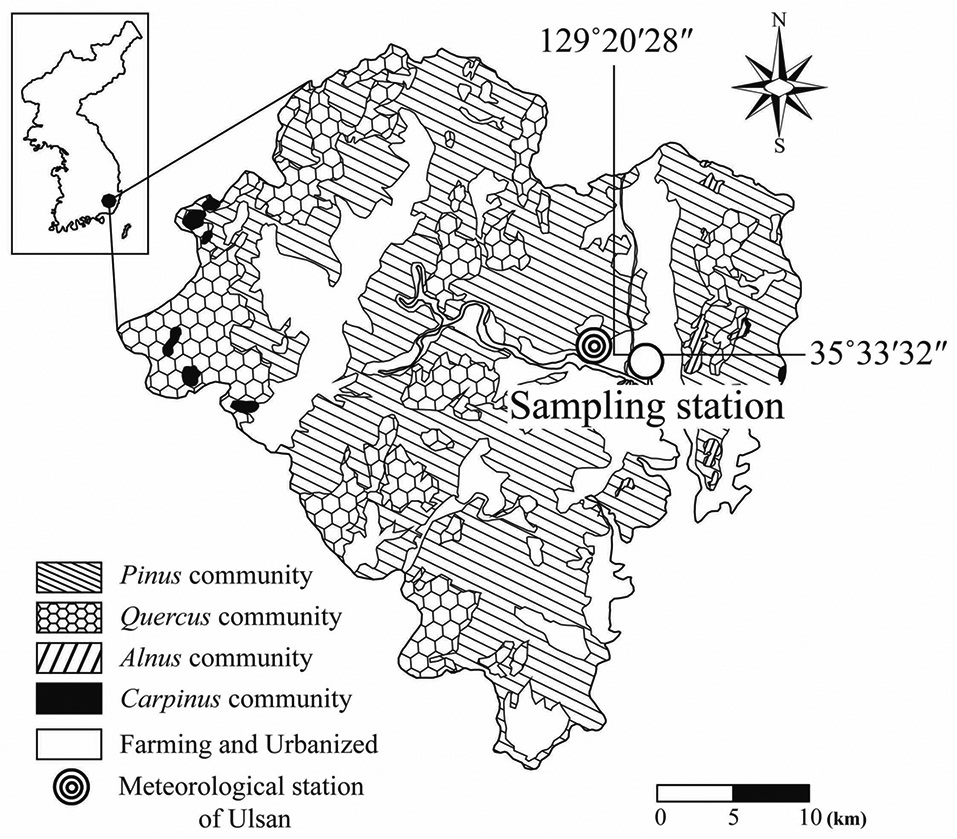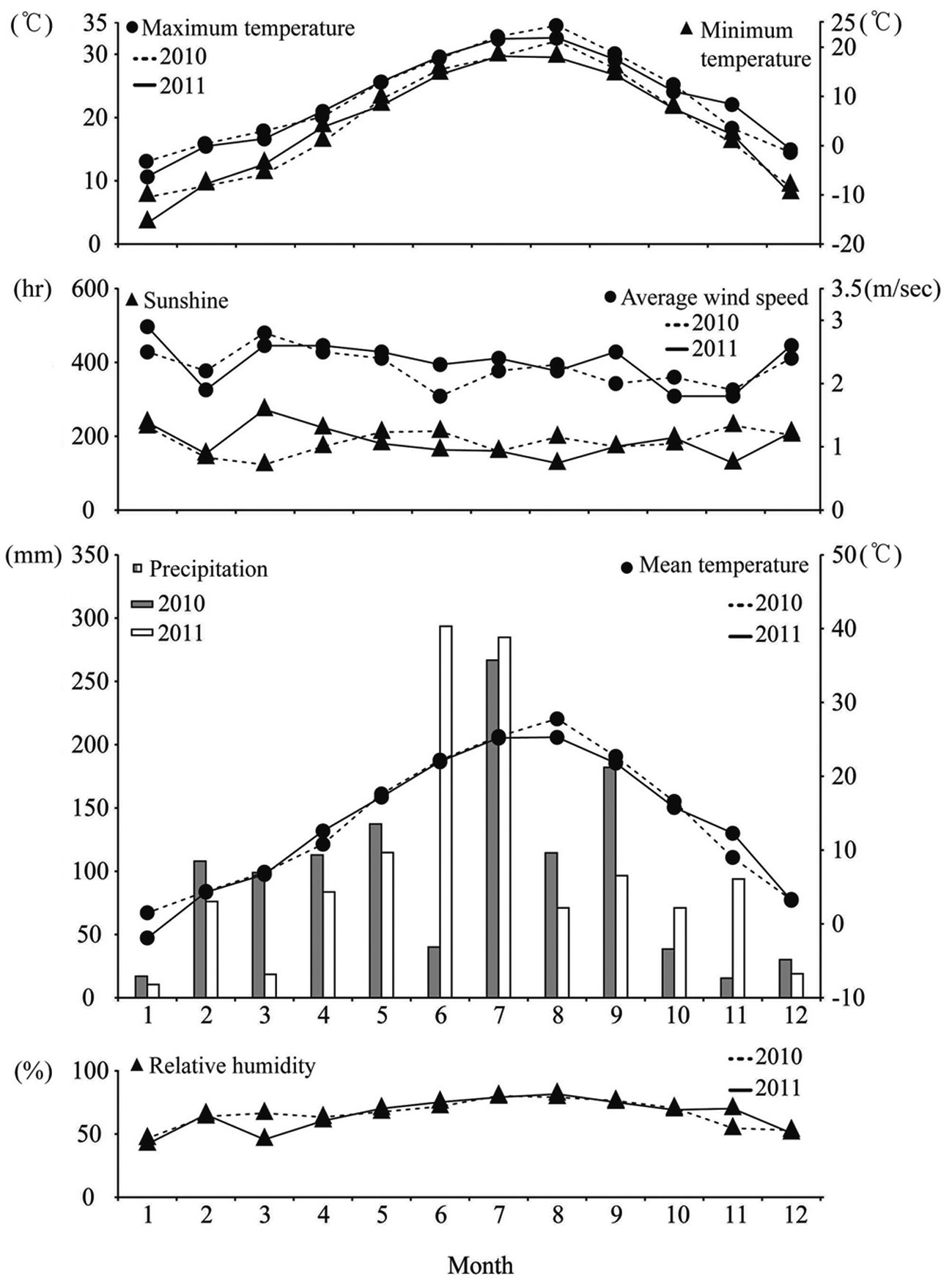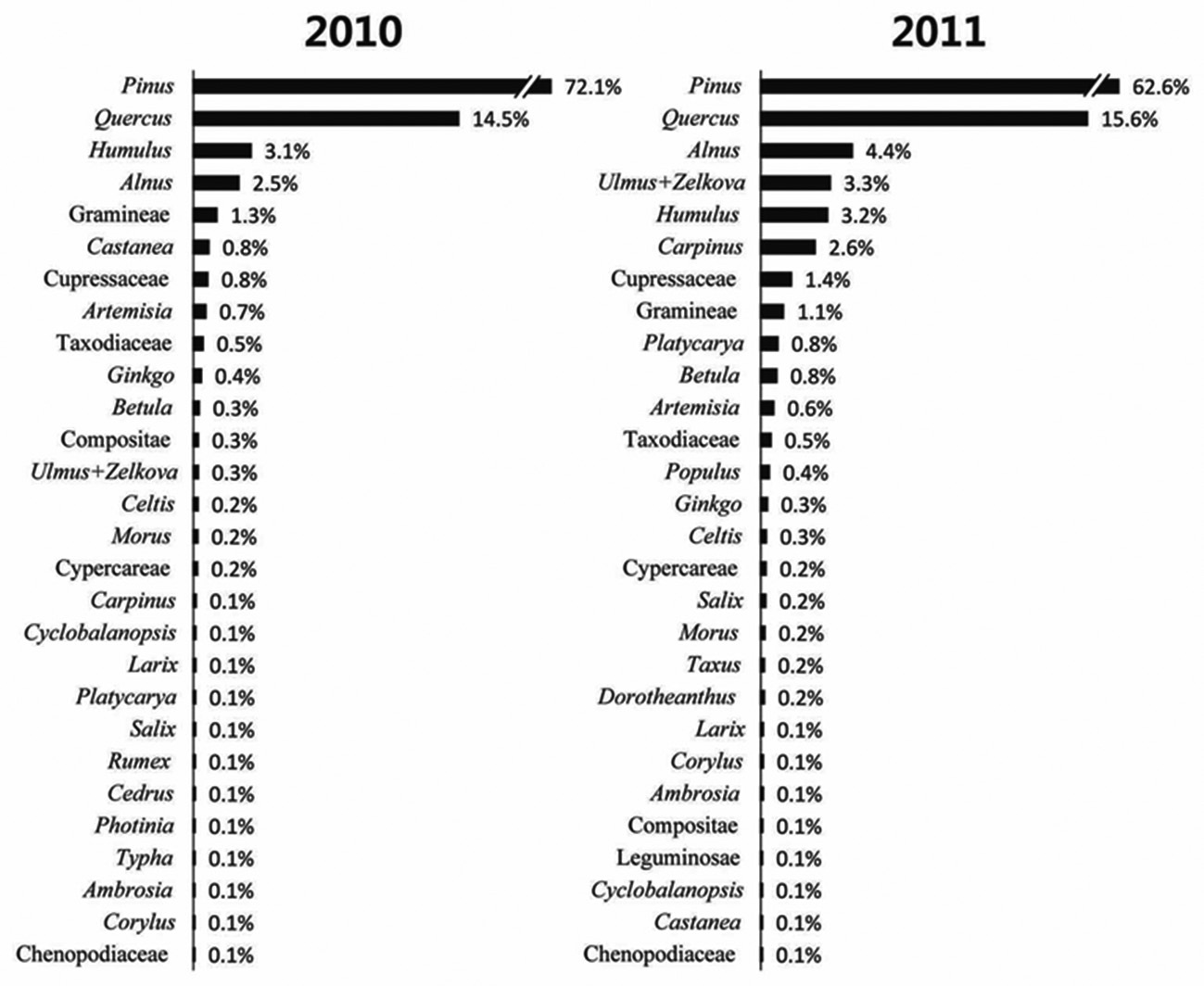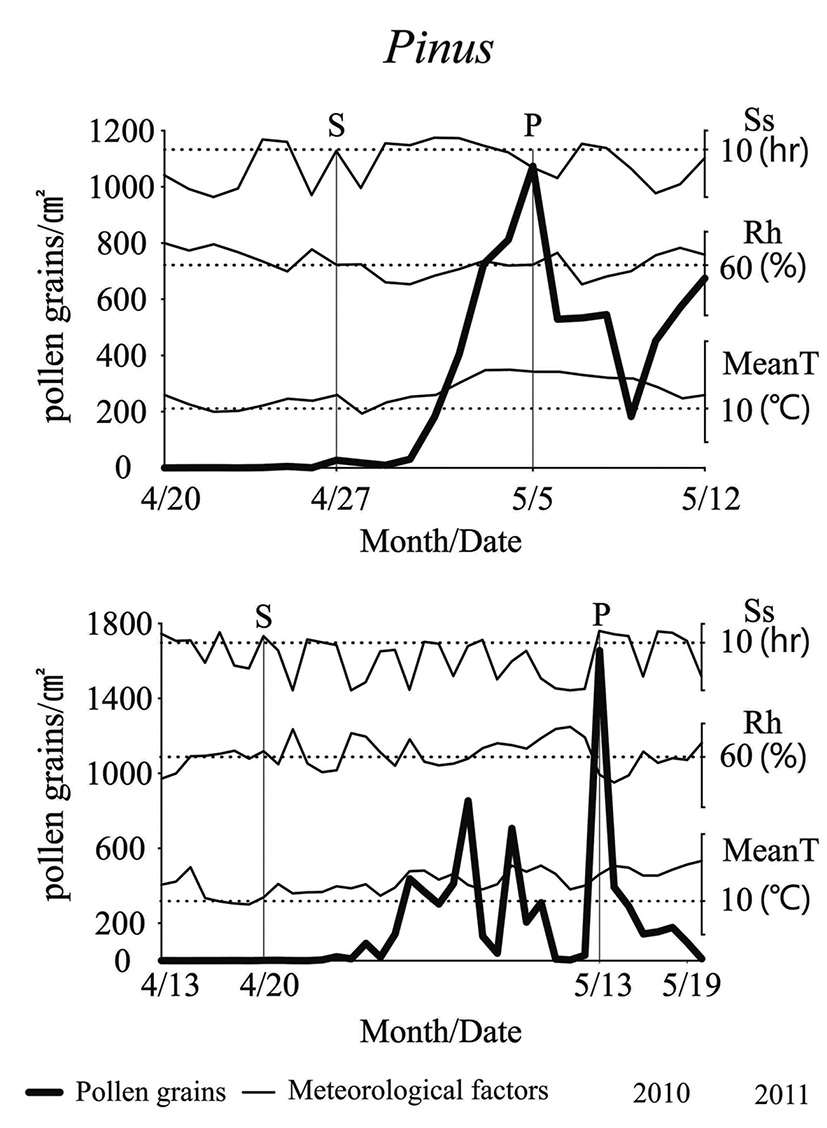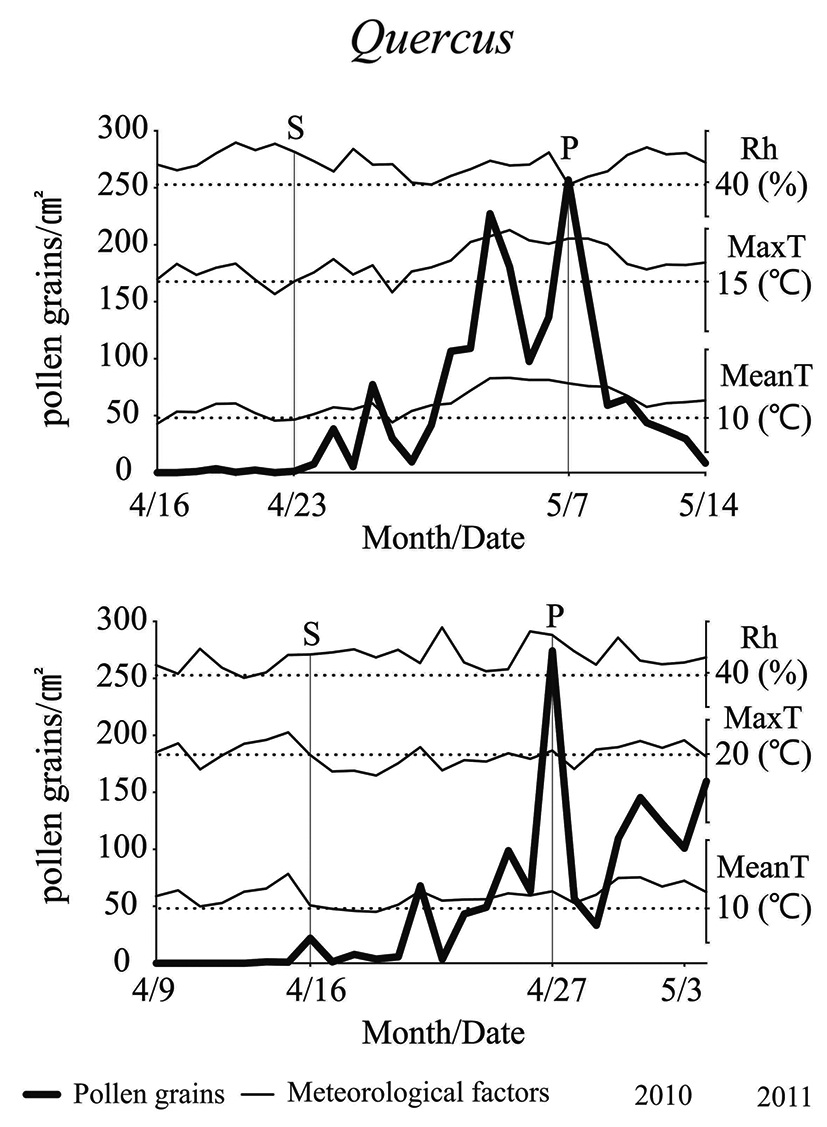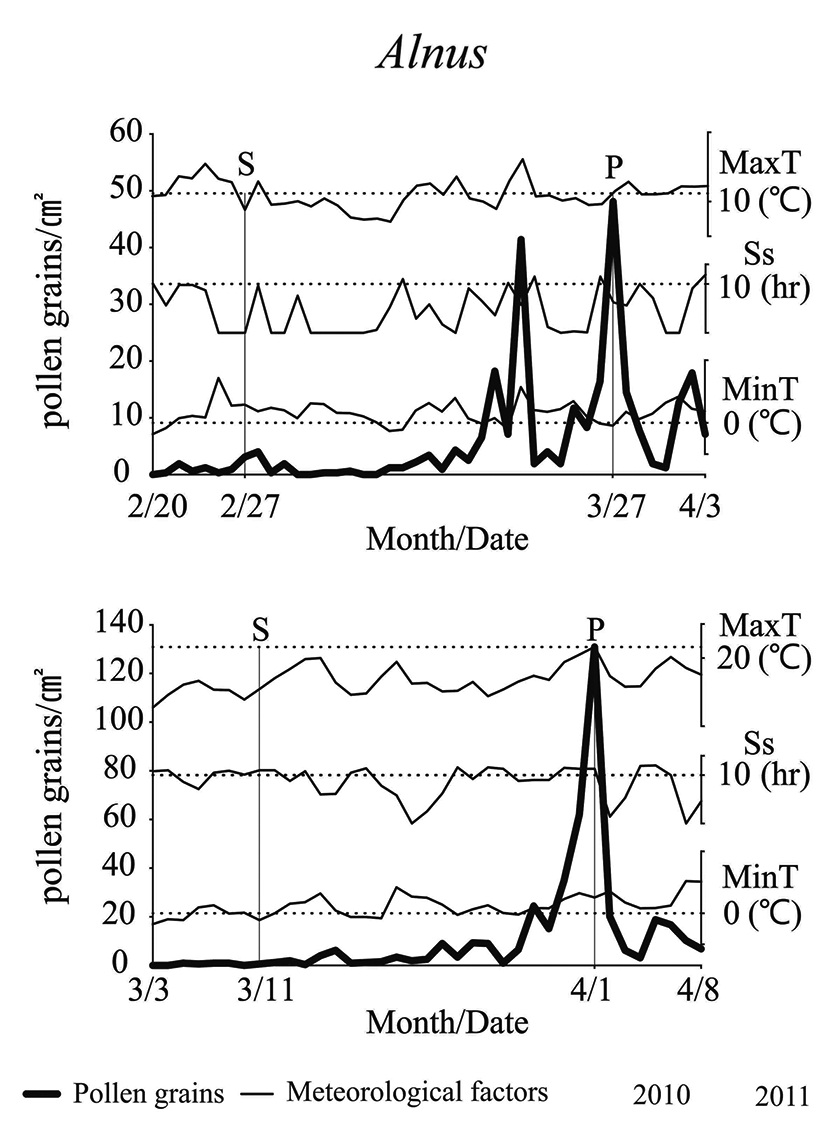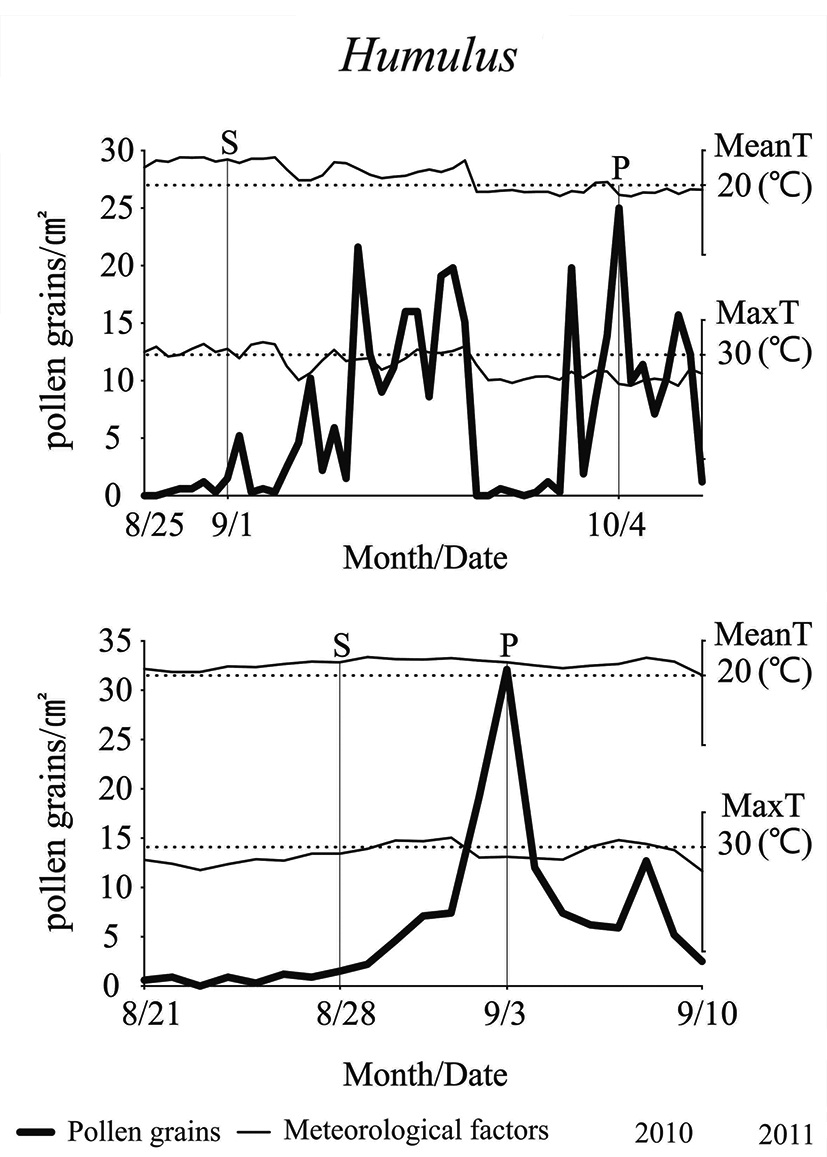



Many plant species have anemophilous flowers, with their pollen being carried primarily on air currents. These anemophilous flowers may not always be readily distinguished from entomophilous flowers whose pollen is carried primarily by insects. The anemophilous pollens are biological particles transported within aerosols (Ogend et al. 1974). The anemophilous pollens are related with some of allergic diseases and especially has been included asthma-allergic lung disease, hay fever-allergic rhinitis and allergies of the eyes and skin (Choi 2011). A environmental material such as pollen in aerosols can trigger allergic symptoms in susceptible humans (D’Amato et al. 2007). It is necessary to investigate pollen types, concentrations, and dispersal periods to determine strategies that could potentially decrease the direct impact of airborne pollen on pollinosis patients. Many countries are accumulating information regarding airborne pollen using the pollen calendar, which is a compilation of monthly data on airborne pollen scatter of major species using statistical analysis. Such information is also made available to the local public data (Lewis et al. 1983, Anderson 1985, Prentics 1985). Airborne pollen scattering, type, and concentration vary from region to region locations (Knok 1979, McDonald 1980), and they are accordingly interrelated with local meteorological parameters such as wind speed, wind direction, air temperature, humidity, and precipitation (Dimitrios et al. 2004) as well as local vegetation (Garcia et al. 2002, Stella 2000). Therefore, local environmental factors that may affect airborne pollen, including local meteorological parameters and vegetation, should be assessed (Boral et al. 2004).
Many studies on airborne pollen in South Korea, have focused on pollen density, size, shape, and scattering patterns, although a few studies have emphasized the relationship between environmental factors and airborne pollen distribution (Chang and Kim 1985, Oh 2009). Continuing to study airborne pollen will be most beneficial to preventive medicine. Therefore, it is imperative to identify which reflects the characteristics of each region for the correlation between meteorological elements and airborne pollen. The purpose of this study was to classify the airborne pollen in Ulsan, and to describe the relationship between meteorological parameters and airborne pollen dispersal. In order to achieve this, we analyzed the pollen scattering period, peak date and concentration of pollen of tree pollen (
Forest areas are distributed over approximately 64% (68134 ha) of the total area of Ulsan.
The sampling site for airborne pollen was located in an urban area of Ulsan (35°33′11″N, 129°21′22″E; altitude 43 m). Although the sampling site is in an urbanized area, it in proximity to the forested areas and the rivers of Ulsan. The sampling station is 3.4 km from the Ulsan Regional Meteorological Station.
Durham samplers were used to collect airborne pollen grains (Durham 1946) from January 1, 2010 to December 31, 2011. Two horizontal 23 cm-diameter circular disks were placed 7.6 cm apart. A mount for a slide glass was placed between the two disks, 2.5 cm below their lower end. The entire apparatus was positioned 1.5 m above the
ground. The installation was such that it was in an open area away from the air handling unit and in a position that allowed for regular exchange of the slide glass. Vaseline was applied to the surface of the slide glass (76 × 26 mm), which was then installed for 24 hr on the sampler. The slide glass was exchanged daily at 09:00. In instances when the slide glass was soaked by precipitation, it was allowed to try naturally. For preservation, the slide glass was stained and sealed using the GV method (gentian violet glycerin jelly). An 18 × 18 mm cover glass was used to protect the sample. Collected airborne pollen was measured and then compared with measurements of airborne pollen and a standard of pollen information collected by the Japan Allergy Foundation (Sahashi et al. 1993). Pollen grains were then measured as the number of grains per cm2 and rounded up to 1 decimal point. The start date was designated as the average of the first two consecutive days with pollen grain observations greater than 1 grains/ cm2. The end date was determined to be one day prior to three consecutive days without pollen grains being observed during the main season.
In order to discern their relationship with airborne pollen scattering, seven meteorological parameters were monitored: average temperature, maximum temperature, minimum temperature, wind speed, maximum wind speed, relative humidity, precipitation, and sunshine. Data was collected at the Ulsan Regional Meteorological Station (located at 35°33′46″N, 129°19′34″E; altitude 34.7 m) using an anemometer, thermometer, and rain gauges set at 12.4 m, 1.7 m, and 0.6 m above ground level.
We were investigated the correlation between seasonal pollen concentration (i.e. start date and peak date) and 8 meteorological parameters. Especially, we focused on several pollen species that had clear seasonal pollen concentration and high concentration in studied sites. Spearman rank correlation coefficient was used to determine the relationship between the seven meteorological parameters and the pollination start and end dates. All statistical analyses were performed using the PASW Statistics 18 software (18.0.0).
>
Meteorological parameters and pollen monitoring
The meteorological parameters in the study area were not statistically different between the two years of measurement. The average annual temperatures were slightly higher in 2010 than in 2011 by 0.3 ℃. Although annual precipitation was not significantly different between 2010 and 2011, spring rainfall was higher in 2010 than in 2011 by 132 mm. Maximum temperature in 2011 was higher by 4.1 ℃ than in 2010 and the lowest temperature in 2011 was also lower than that in 2010 by 0.3 ℃. Although the average relative humidity was not significantly different, the monthly relative humidity was 20.8 % higher in March 2010 than in March 2011. Sunshine was 149.2 hr longer in March 2011 than in March 2010 (Fig. 2).
Pollen from 36 genera belonging to 41 families were recorded and identified during the 2-year study. The total number of pollen grains recorded in 2010 was 13152.9 grains/cm2 and 11542.4 grains/cm2 in 2011. Pollen was recorded from 29 genera belonging to 23 families in 2010 and from 26 genera belonging to 21 families in 2011. Of these, 15 families (12 genera) and 14 families (12 genera) belonging to herbaceous plants were identified in 2010 and 2011, respectively.
>
Relationships between meteorological parameters and pollen distribution
The start date of the pollen season of
The start date of the pollen season of
[Table 1.] Deposition time, peak time, and amount of pollen

Deposition time, peak time, and amount of pollen

Significant correlation coefficients (Spearman's R) for daily pollen concentration and meteorological parameters
greater in 2011 than in 2010. The start date of the
affected to the peak date of pollen were not clear but the peak date of
This study assessed the types and concentrations of airborne pollen grains in Ulsan.
Among the collected airborne pollens in Ulsan, the start date and peak date of


